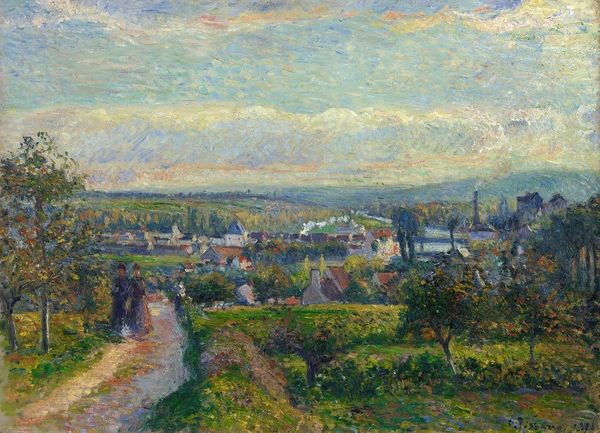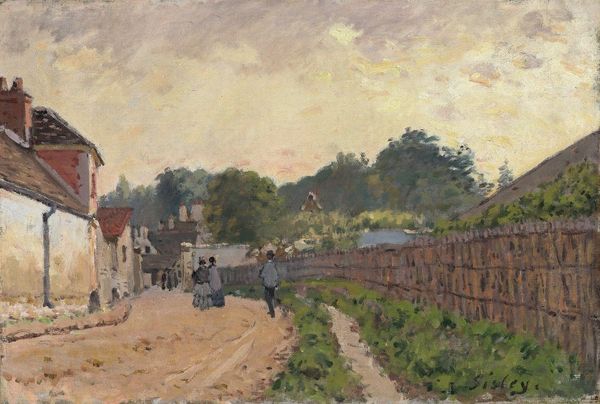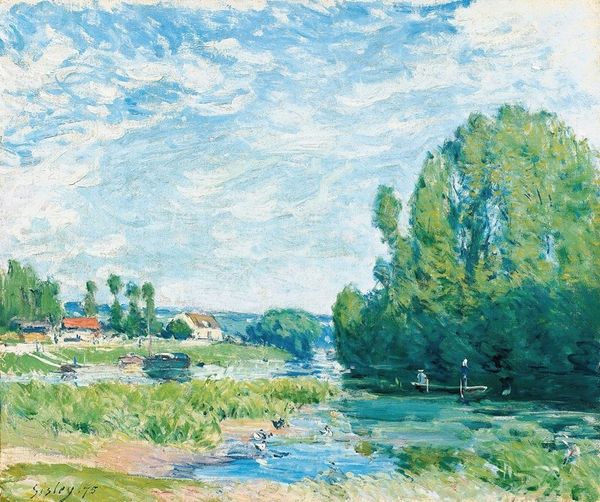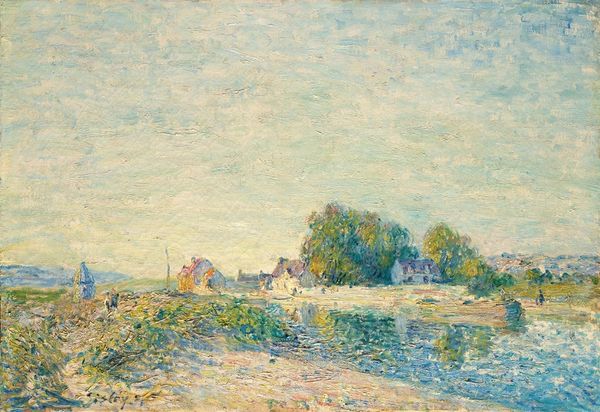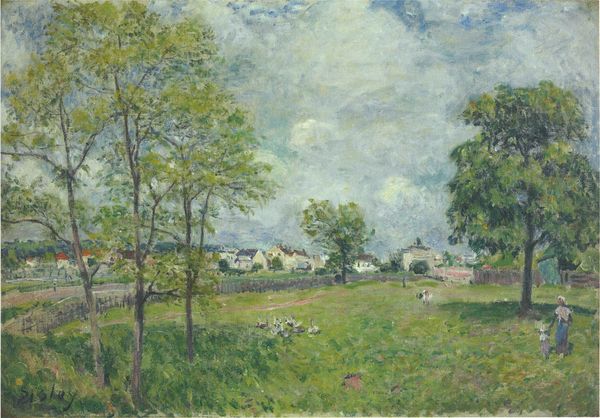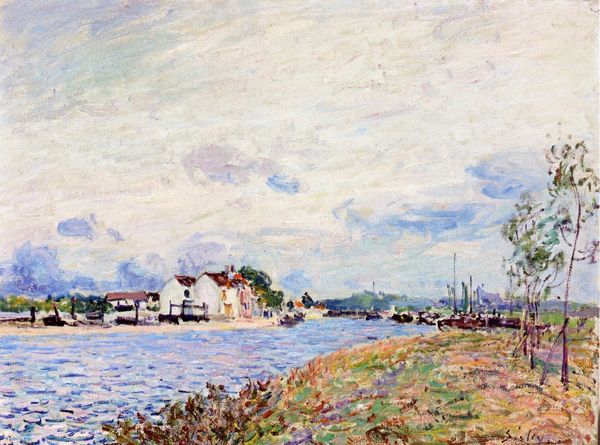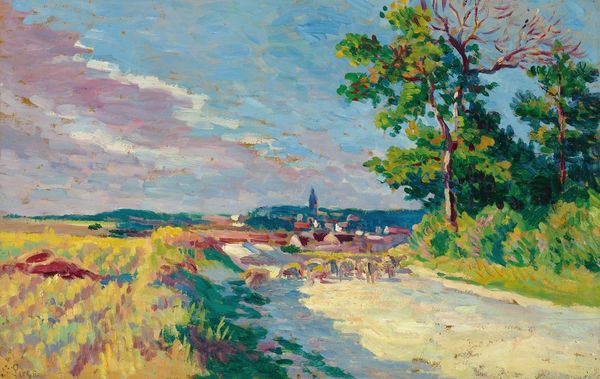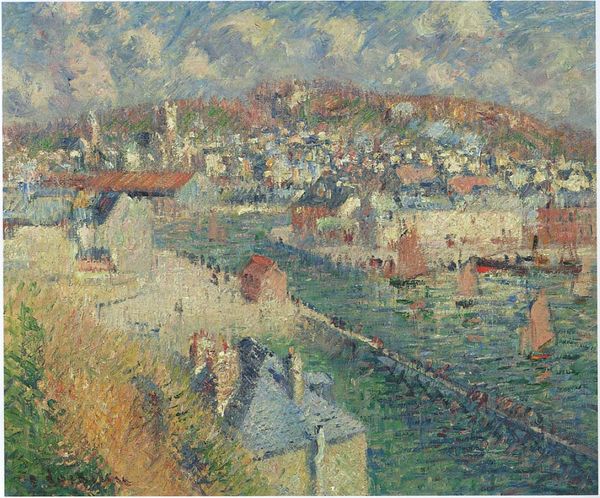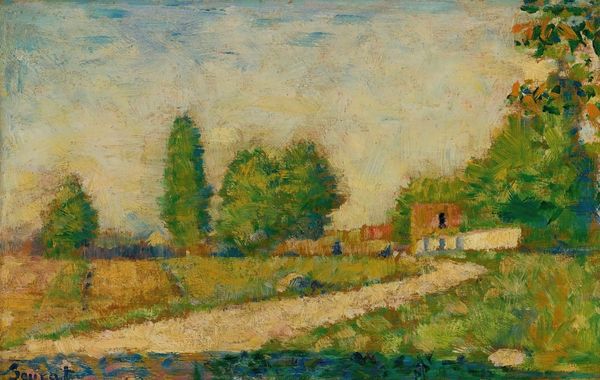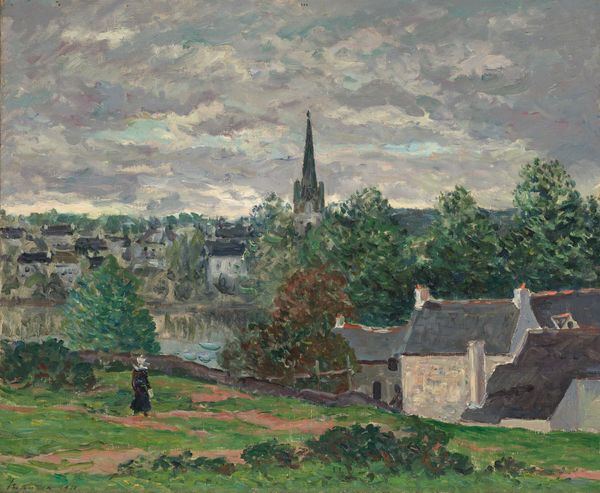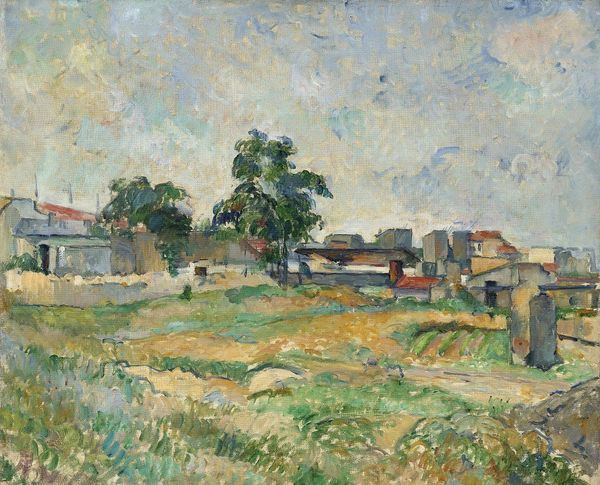
Copyright: Public Domain: Artvee
Editor: We're looking at Alfred Sisley's "The Seine near St-Cloud," painted in 1877 using oil on canvas. It's a hazy landscape with a winding river. The color palette feels very muted to me, a harmonious range of greens, blues, and greys that blend effortlessly. What aspects of this painting capture your attention the most? Curator: Immediately, I'm struck by the artist's rendering of light. Note how Sisley employs short, broken brushstrokes. It's not just about depicting the objects, but capturing the fleeting effects of light on them. How does this technique influence your perception of the scene? Editor: I think it blurs the line between realism and suggestion. The brushstrokes create a sense of movement, like the wind rustling through the trees or the water rippling in the river. Curator: Precisely. The composition itself is also quite deliberate. The winding Seine acts as a compositional device, drawing the viewer's eye into the scene. Notice the subtle division of space – the foreground meadow, the river, the distant hillside. Each plane interacts chromatically through tone to build a very sophisticated structure. Does the asymmetrical balance influence the mood of the scene? Editor: Definitely. The slight imbalance makes it feel very natural, not staged. What would you say Sisley achieves through this particular style of representation? Curator: Sisley transcends mere representation; the painting embodies an immersive experience. It emphasizes sensation and atmospheric effect rather than literal detail. Its lasting appeal resides in that visual phenomenon. Editor: So, it's more about the feeling of being there than a photographic depiction. That really gives me a deeper understanding of Impressionism! Thanks! Curator: Indeed. And appreciating that sensory emphasis, informed by a robust compositional structure, heightens one's comprehension.
Comments
No comments
Be the first to comment and join the conversation on the ultimate creative platform.
